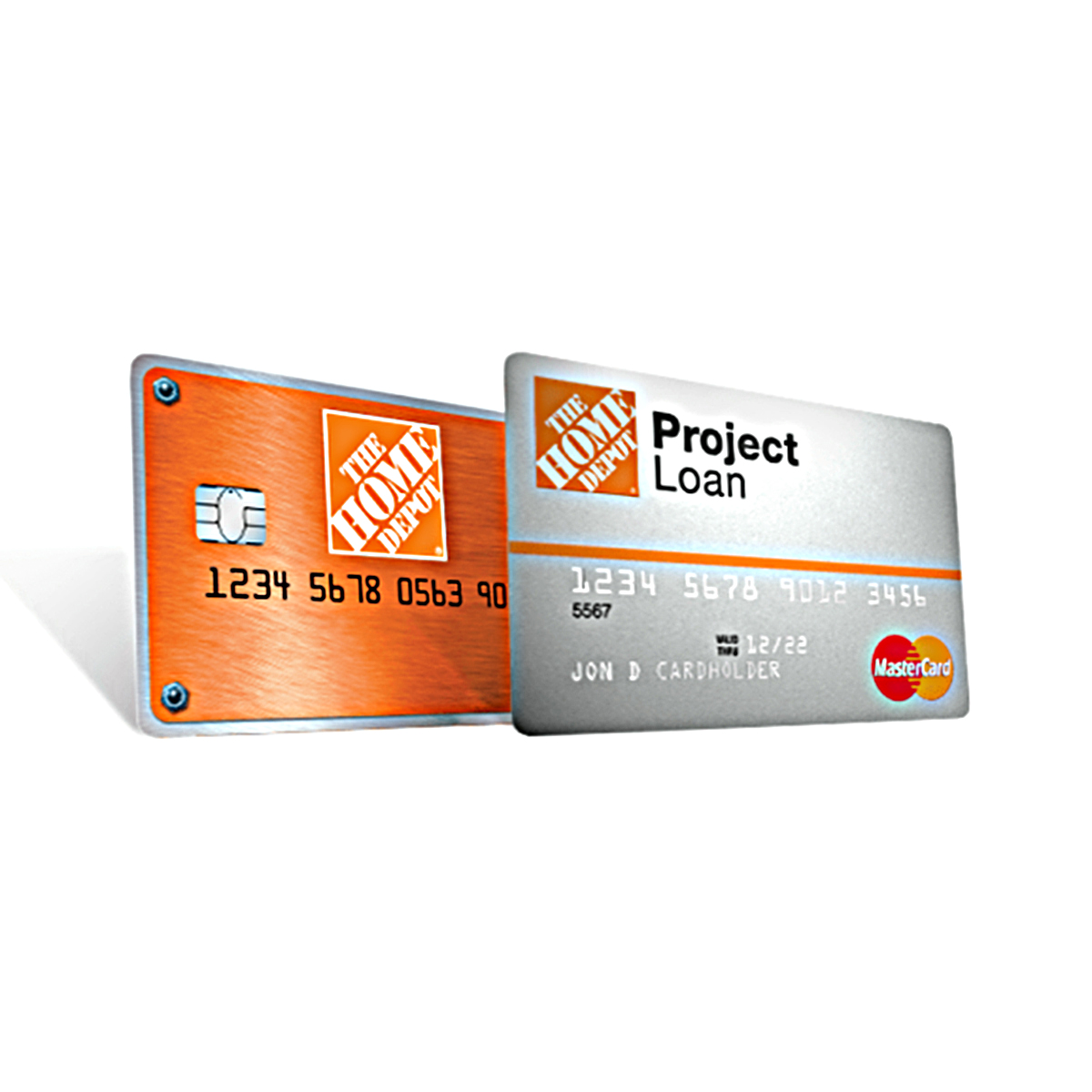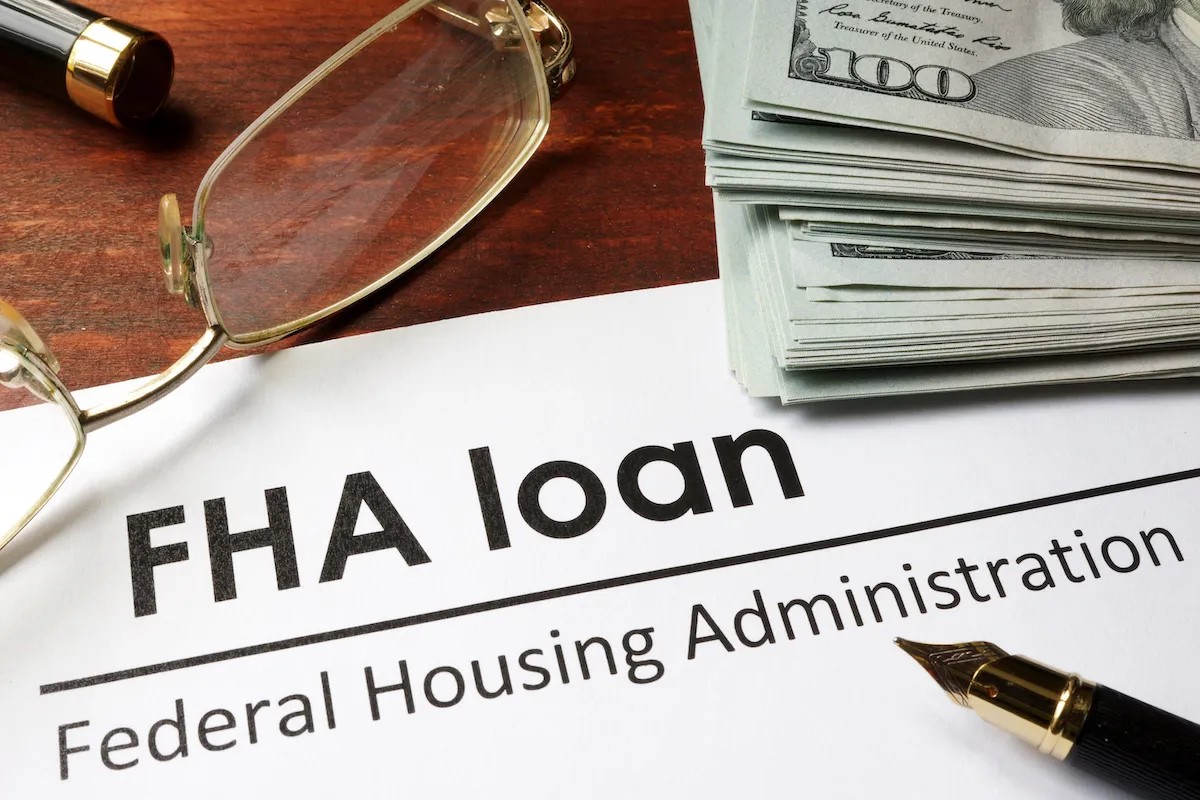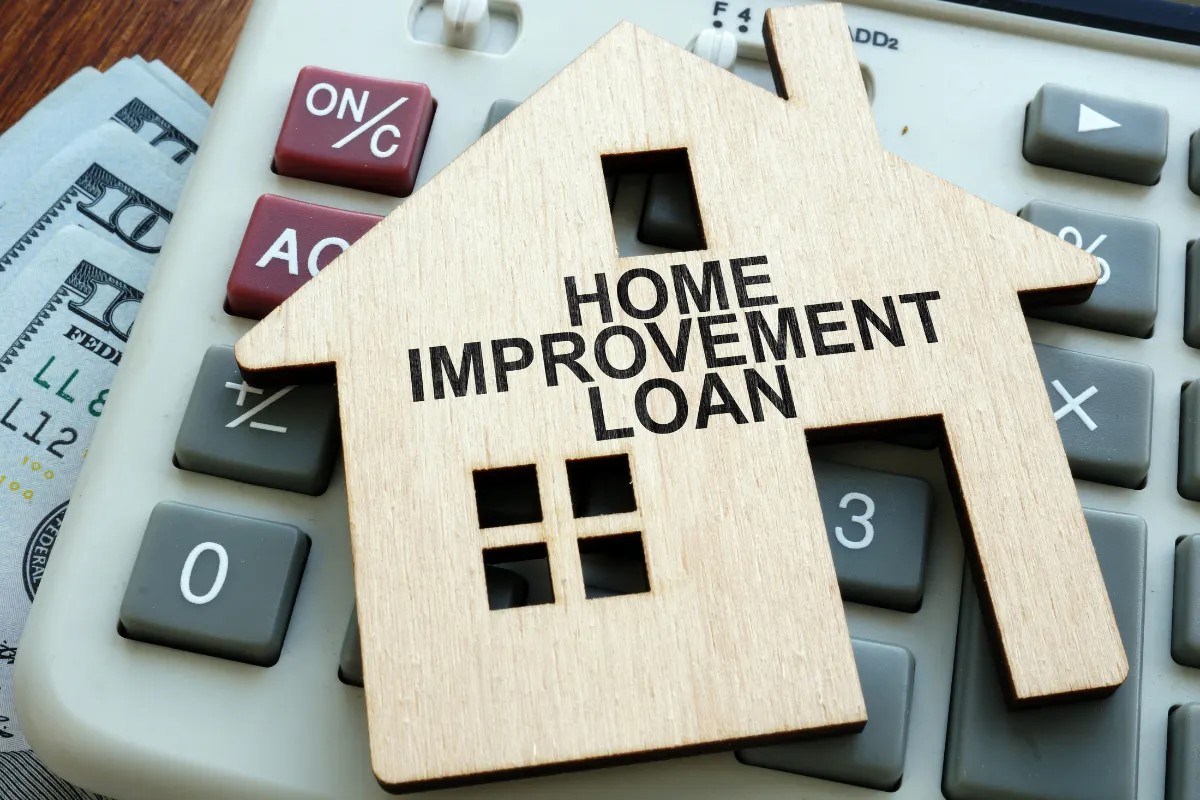Home>Renovation & DIY>Home Renovation Guides>Which Is Better For Home Improvements? A Line Of Credit Or A Loan?


Home Renovation Guides
Which Is Better For Home Improvements? A Line Of Credit Or A Loan?
Modified: October 20, 2024
Discover the best financing option for your home renovation project. Learn the differences between a line of credit and a loan to make an informed decision. Explore our home renovation guides now!
(Many of the links in this article redirect to a specific reviewed product. Your purchase of these products through affiliate links helps to generate commission for Storables.com, at no extra cost. Learn more)
Introduction
When it comes to making significant home improvements, many homeowners find themselves facing a common dilemma: should they opt for a line of credit or a loan to fund their projects? This decision can significantly impact the overall cost and financial implications of the renovation process. To make an informed choice, it's crucial to understand the nuances of both options and weigh their respective pros and cons.
In this comprehensive guide, we will delve into the intricacies of lines of credit and loans, shedding light on their unique features, advantages, and potential drawbacks. By the end of this exploration, you will be equipped with the knowledge needed to make a well-informed decision regarding the financing of your home improvement endeavors.
So, let's embark on this enlightening journey, unraveling the mysteries of lines of credit and loans to determine which option might be better suited for your specific home renovation needs.
Key Takeaways:
- For flexible and evolving home improvement projects, a line of credit offers the freedom to access funds as needed, providing cost-effectiveness and financial agility.
- For renovations with clear budgets, a home improvement loan provides stability and predictability, empowering homeowners to manage long-term financial commitments with confidence.
Understanding Lines of Credit
Before delving into the comparison between lines of credit and loans for home improvements, it’s essential to grasp the concept of a line of credit. Essentially, a line of credit is a flexible borrowing option that allows homeowners to access funds up to a predetermined limit. This financial arrangement provides the borrower with the freedom to withdraw funds as needed, making it an attractive choice for ongoing or unpredictable expenses associated with home renovations.
Lines of credit are typically categorized into two main types: secured and unsecured. A secured line of credit is backed by collateral, often in the form of the homeowner’s equity in their property. This type of line of credit generally offers higher borrowing limits and lower interest rates due to the reduced risk for the lender. On the other hand, an unsecured line of credit does not require collateral, making it a suitable option for homeowners who may not have substantial equity in their property.
One of the key advantages of a line of credit is its flexibility. Unlike a traditional loan, where the entire amount is disbursed upfront, a line of credit allows homeowners to access funds as needed, thereby providing greater control over their renovation expenses. Additionally, interest is only incurred on the amount withdrawn, offering a level of cost-effectiveness and financial agility that may not be present with a standard loan.
Furthermore, lines of credit often come with a “draw period,” during which borrowers can access funds, followed by a “repayment period” during which they must repay the borrowed amount. This structure aligns with the fluctuating nature of home improvement costs, allowing homeowners to manage their expenses in a manner that suits their individual circumstances.
Understanding the intricacies of lines of credit is crucial for homeowners seeking a flexible and adaptable financing option for their home improvement projects. With this knowledge in hand, let’s now turn our attention to the concept of loans and explore how they compare to lines of credit in the context of home renovations.
Understanding Loans
As we delve into the realm of financing home improvements, it’s imperative to comprehend the fundamental aspects of loans. A loan, in the context of home renovations, is a lump sum of money borrowed from a financial institution or lender, with the borrower agreeing to repay the amount, usually with interest, over a specified period. Unlike a line of credit, which offers flexibility in accessing funds, a loan disburses the entire amount upfront, making it suitable for projects with well-defined costs and a clear budget.
Home improvement loans come in various forms, each tailored to meet the diverse needs of homeowners embarking on renovation journeys. One prevalent type is the home equity loan, which leverages the equity accrued in the property to secure the borrowed amount. This type of loan often offers competitive interest rates and fixed repayment terms, providing predictability and stability in managing renovation expenses.
Another popular option is the home improvement personal loan, which is unsecured and typically based on the borrower’s creditworthiness. This type of loan may be advantageous for homeowners without substantial equity in their property, offering a straightforward application process and a swift disbursement of funds to facilitate timely project commencement.
One of the primary benefits of a loan for home improvements is the clarity it provides in terms of budgeting and planning. With the entire amount available upfront, homeowners can accurately assess their renovation costs and allocate funds accordingly, minimizing the risk of unexpected financial constraints during the project.
Moreover, loans often come with fixed interest rates and structured repayment schedules, allowing for precise long-term financial planning. This stability can be particularly beneficial for homeowners seeking to spread the cost of their renovations over an extended period without being exposed to fluctuating interest rates.
Understanding the dynamics of loans is essential for homeowners evaluating their financing options for home improvements. With a solid grasp of both lines of credit and loans, we can now proceed to analyze the respective advantages and potential drawbacks of these financing avenues.
Pros and Cons of Lines of Credit
Lines of credit offer a range of advantages that make them an appealing choice for homeowners considering financing options for home improvements. One of the primary benefits is the flexibility they provide. With a line of credit, homeowners have the freedom to access funds as needed, allowing them to navigate the unpredictable nature of renovation expenses without being bound by a lump sum disbursement.
Additionally, lines of credit often come with lower initial costs, as they typically do not incur interest until funds are drawn. This feature can be advantageous for homeowners who want to have access to funds for potential expenses without immediately incurring interest charges.
Moreover, lines of credit can serve as a valuable safety net, offering a financial buffer for unforeseen costs or emergencies that may arise during the renovation process. This added security can provide peace of mind to homeowners, especially when undertaking extensive or prolonged home improvement projects.
However, it’s essential to consider the potential drawbacks of lines of credit. One notable concern is the variable interest rates associated with this financing option. As interest rates fluctuate, so too can the cost of borrowing, potentially leading to increased expenses over time.
Furthermore, lines of credit may require discipline and prudent financial management to avoid overspending or accumulating excessive debt. Without careful budgeting and monitoring of expenses, homeowners may find themselves facing challenges in repaying the borrowed funds within the designated timeframe.
While lines of credit offer flexibility and accessibility, they necessitate a strategic approach to ensure responsible and sustainable use. Understanding these advantages and drawbacks is crucial for homeowners seeking to make informed decisions about financing their home improvement endeavors.
When deciding between a line of credit and a loan for home improvements, consider the interest rates, repayment terms, and flexibility of each option. A line of credit may offer more flexibility for ongoing projects, while a loan may have a fixed repayment schedule.
Pros and Cons of Loans
Home improvement loans present a range of advantages that make them an attractive option for homeowners seeking financing for renovation projects. One of the primary benefits is the predictability they offer. With a loan, homeowners receive a lump sum upfront, providing clarity and certainty in budgeting for their renovation expenses. This upfront disbursement enables precise planning and allocation of funds, reducing the risk of financial uncertainties during the project.
Moreover, loans often come with fixed interest rates, offering stability and predictability in the cost of borrowing. This feature can be particularly advantageous for homeowners looking to manage their long-term financial commitments without being exposed to the potential fluctuations of variable interest rates.
Additionally, home improvement loans, especially those secured by home equity, typically offer competitive interest rates compared to unsecured lines of credit or personal loans. This can result in cost savings over the life of the loan, making it a financially prudent choice for funding renovation endeavors.
However, it’s important to consider the potential drawbacks of home improvement loans. One notable concern is the obligation to repay the entire borrowed amount, along with interest, regardless of whether the funds were fully utilized for the renovation project. This may lead to a situation where homeowners have excess funds that are not immediately needed, yet interest accrues on the entire borrowed amount.
Furthermore, the application process for home improvement loans may involve more stringent eligibility criteria and documentation requirements, especially for secured loans. This can potentially create barriers for homeowners who do not meet the specified financial prerequisites or who require expedited access to funds for time-sensitive renovation projects.
While home improvement loans offer stability and predictability, they necessitate a thorough assessment of the overall project costs and a disciplined approach to managing the borrowed funds. Understanding these advantages and potential drawbacks is essential for homeowners evaluating the most suitable financing option for their specific home improvement needs.
Read more: Home Improvements: Which Credit Card Is Best
Comparing Lines of Credit and Loans for Home Improvements
As homeowners navigate the terrain of financing options for home improvements, the decision between a line of credit and a loan necessitates a thoughtful comparison of their respective attributes. Both financing avenues offer distinct benefits and considerations, and understanding their differences is crucial for making an informed choice.
When assessing lines of credit, the flexibility they provide stands out as a key advantage. Homeowners can access funds as needed, accommodating the variable and often unpredictable nature of renovation expenses. This adaptable approach allows for agile financial management, particularly in projects with evolving requirements or phased construction.
On the other hand, home improvement loans offer predictability and stability. With a lump sum disbursed upfront, homeowners can precisely budget and allocate funds for their renovation endeavors. The fixed interest rates associated with loans provide assurance in managing long-term financial commitments, shielding borrowers from potential fluctuations in borrowing costs.
Another crucial aspect to consider is the cost of borrowing. Lines of credit typically incur interest only on the amount withdrawn, offering potential cost savings for homeowners who require intermittent access to funds throughout the renovation process. In contrast, home improvement loans may feature competitive fixed interest rates, providing financial predictability and potentially lower overall borrowing costs, especially for larger, one-time expenses.
Furthermore, the application and approval processes for lines of credit and loans differ in their requirements and timelines. Lines of credit, especially unsecured ones, may offer a more streamlined application process, making them suitable for homeowners seeking expedited access to funds without extensive documentation. In contrast, home improvement loans, particularly those secured by home equity, may involve more comprehensive eligibility criteria and documentation, potentially resulting in a longer approval timeline.
Ultimately, the choice between a line of credit and a loan for home improvements hinges on the specific needs and preferences of the homeowner. For projects with fluid or evolving financial demands, a line of credit may offer the flexibility and accessibility required. Conversely, for renovations with well-defined costs and a clear budget, a home improvement loan may provide the stability and predictability needed to effectively manage expenses.
By carefully weighing the advantages and considerations of lines of credit and loans, homeowners can make a well-informed decision that aligns with their unique home improvement aspirations and financial circumstances.
Conclusion
Embarking on home improvement projects is an exciting endeavor, and the choice of financing can significantly impact the overall experience and financial implications. As we’ve navigated the intricacies of lines of credit and loans, it’s evident that both options offer distinct advantages and considerations, catering to the diverse needs of homeowners seeking to enhance their living spaces.
Lines of credit stand out for their flexibility, providing homeowners with the freedom to access funds as needed, making them an ideal choice for projects with evolving or unpredictable expenses. The ability to incur interest solely on the withdrawn amount offers cost-effective financial management, aligning with the fluctuating nature of renovation endeavors.
On the other hand, home improvement loans offer predictability and stability, empowering homeowners to accurately budget and allocate funds for their renovation projects. With fixed interest rates and a lump sum disbursed upfront, loans provide assurance in managing long-term financial commitments, shielding borrowers from potential fluctuations in borrowing costs.
When making the decision between a line of credit and a loan for home improvements, it’s essential for homeowners to assess their specific project requirements, financial preferences, and long-term goals. Projects with fluid or evolving financial demands may benefit from the flexibility and accessibility of a line of credit, while renovations with well-defined costs and a clear budget may thrive under the stability and predictability offered by a home improvement loan.
Ultimately, the optimal financing option for home improvements is a deeply personal decision, influenced by factors such as project scope, financial circumstances, and individual preferences. By understanding the nuances of lines of credit and loans, homeowners can make informed choices that align with their unique aspirations and empower them to transform their living spaces with confidence and financial prudence.
As you embark on your home improvement journey, may this guide serve as a valuable resource, illuminating the path to informed decision-making and empowering you to realize your vision for a more beautiful and functional home.
Frequently Asked Questions about Which Is Better For Home Improvements? A Line Of Credit Or A Loan?
Was this page helpful?
At Storables.com, we guarantee accurate and reliable information. Our content, validated by Expert Board Contributors, is crafted following stringent Editorial Policies. We're committed to providing you with well-researched, expert-backed insights for all your informational needs.















0 thoughts on “Which Is Better For Home Improvements? A Line Of Credit Or A Loan?”